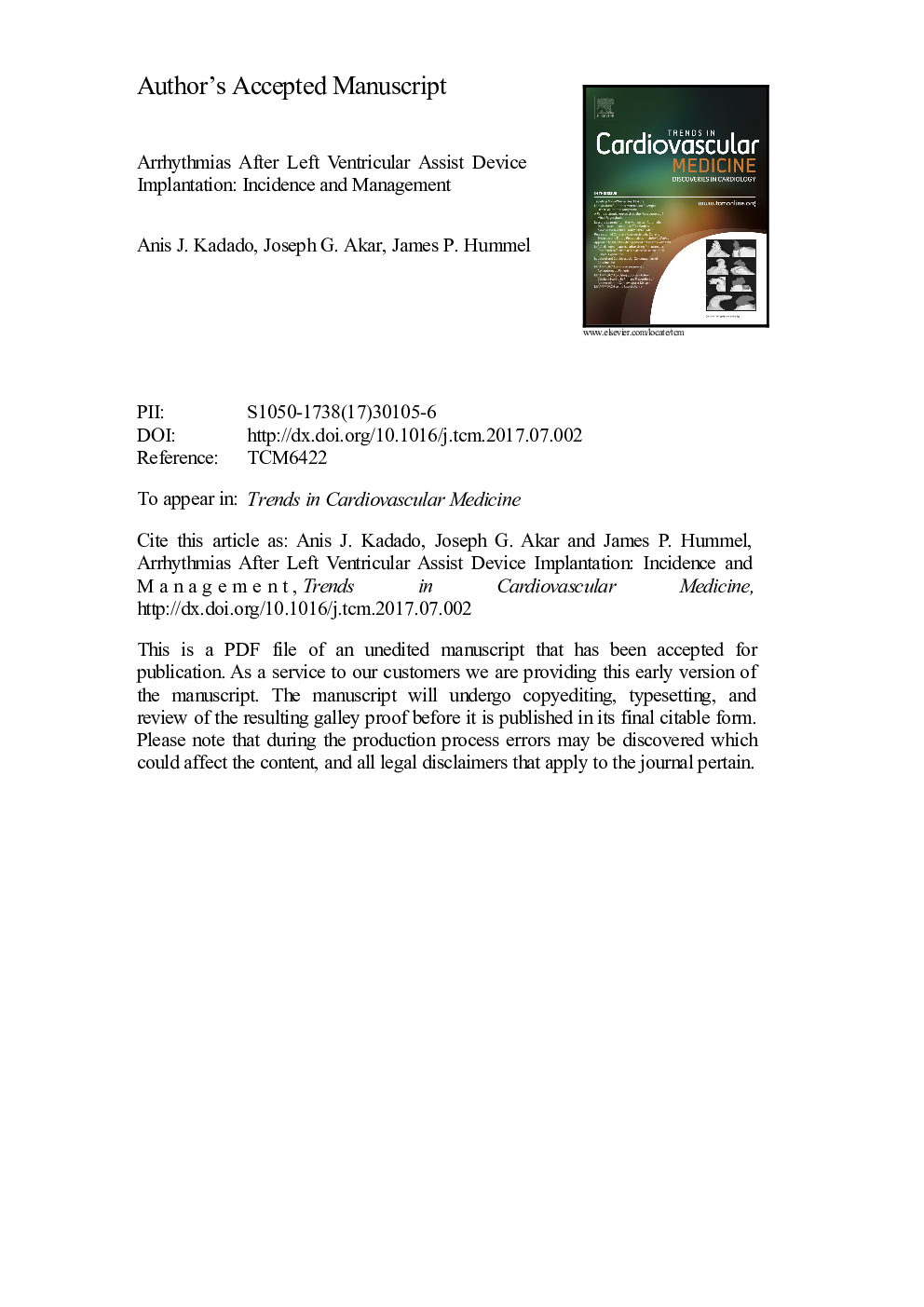| Article ID | Journal | Published Year | Pages | File Type |
|---|---|---|---|---|
| 8679851 | Trends in Cardiovascular Medicine | 2018 | 28 Pages |
Abstract
The use of mechanical circulatory support has become an increasingly common practice in patients with heart failure, whether used as bridge to transplantation or as destination therapy. The last couple of decades has seen a drastic change in the functioning of the left ventricular assist devices (LVAD), changing from the first generation devices running on pulsatile flow to the current continuous flow devices. Atrial and ventricular arrhythmias are common among heart failure patients, and though the systematic circulation is well supported in patients on mechanical circulatory support, these arrhythmias can still be the cause of detrimental symptoms and lead to potentially fatal outcomes. Several studies have shown that mortality rates in LVAD recipients secondary to lethal arrhythmias are uncommon, and newer generation continuous flow devices particularly seem to support hemodynamic support well. While it is common practice to implant ICDs in patients with LVADs and a history of ventricular arrhythmias, the efficacy behind this practice at preventing sudden death in this population is unknown. In this review, we highlight what is already known about the complications, management and treatment of atrial and ventricular arrhythmias in patients with LVAD devices.
Keywords
Related Topics
Health Sciences
Medicine and Dentistry
Cardiology and Cardiovascular Medicine
Authors
Anis J. MD, Joseph G. MD, PhD, James P. MD,
